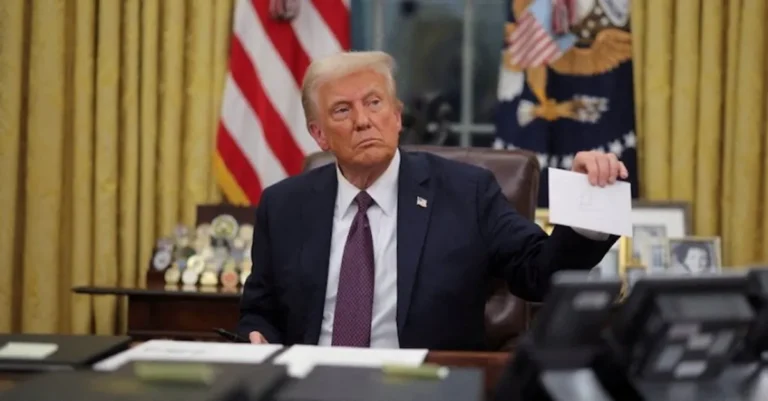Introduction
In a significant policy shift, President Trump has announced plans to impose tariffs on products imported from Canada, Mexico, and China, starting February 1. These three countries together constitute over a third of U.S. trade, raising concerns about potential disruptions in diplomatic relations and global supply chains.
Immediate Implications of Tariff Announcements
Just hours after his inauguration, President Trump revealed his intent to levy a 25% tariff on goods from Canada and Mexico, attributing the decision to security concerns regarding “mass numbers of people and fentanyl” allegedly entering the United States from these neighboring nations. The following day, he expanded his tariff threats to include a 10% tariff on Chinese products, linking China to the fentanyl crisis via its trade connections with Mexico.
With only ten days remaining until these tariffs take effect, both American businesses and international trade experts express apprehension over the potential fallout. Collectively, Mexico, Canada, and China comprised more than $1 trillion in U.S. exports and about $1.5 trillion in imports last year, underpinning millions of jobs across the United States.
The Interwoven Economies of North America
The economies of Mexico and Canada are closely tied to that of the United States, with extensive supply chains crisscrossing North American borders. For instance, a single automobile’s parts may traverse the U.S.-Canada border up to eight times during assembly. Additionally, consumer products, from blue jeans made with American materials and sewn in Mexico to agricultural goods, frequently change hands across these borders.
Experts warn that implementing tariffs could lead to steep increases in retail prices for consumers, and might even compel domestic manufacturers to shut down operations due to ballooning costs.
Uncertainty Surrounding the Tariffs
As of now, the extent and specific targets of the tariffs remain unclear. Discussions within the Trump administration suggest the possibility of tariffs affecting a broad range of imports or focused on targeted industries, such as automotive and steel manufacturing.
Only time will tell if these threats materialize. Despite this uncertainty, the stock markets have largely dismissed the tariff announcements, continuing to hover near record highs.
Diplomatic Responses from Neighbors and China
In response to the impending tariffs, both Canada and Mexico have moved swiftly to alleviate fears. They have conveyed to the Trump administration that they are enhancing border security measures to combat drug trafficking and illegal immigration. Additionally, both nations have prepared lists of American goods on which they might impose retaliatory tariffs if necessary.
Meanwhile, the Chinese government has also considered its options for potential retaliation, with a representative from China’s Foreign Ministry emphasizing the belief that there are no victors in a trade war.
Conclusion
As the February 1 deadline approaches, the geopolitical landscape may face a significant shakeup depending on the implementation and repercussions of President Trump’s announced tariffs. Stakeholders across the board—from businesses to consumers—will be closely monitoring this situation as it unfolds.



